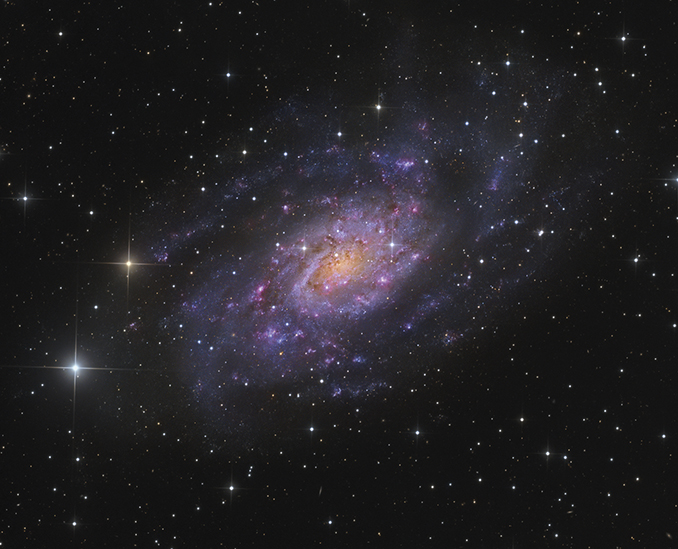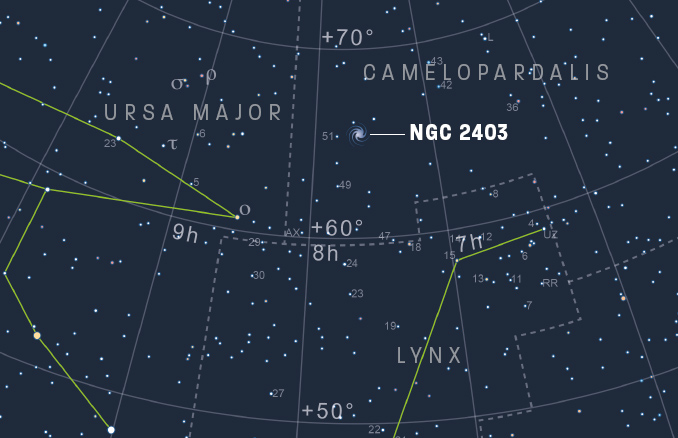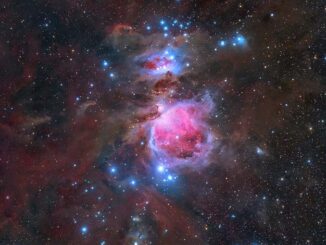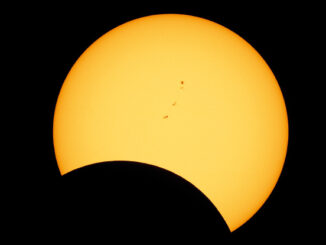
NGC 2403 (Caldwell 7) is a large, bright galaxy that serves up good views for small telescopes but it’s position in the rather obscure northern constellation of Camelopardalis has stunted its popularity. It’s a very photogenic object, with deep amateur images revealing a strong likeness to Messier 33, the magnificent Local Group spiral, albeit on a less-grander scale. A small telescope can track it down, while a monster light-bucket Dobsonian telescope isn’t required to hint at its structure.
NGC 2403 is an outlying member of the M81 group of galaxies, named for the magnificent spiral galaxy in Ursa Major, which is one of the nearest such grouping to our own Local Group, its centre lying approximately 11–12 million light years away. NGC 2403’s distance is around 10 million light years and its physical diameter is 98,000 light years.
Unlike M33, NGC 2403 doesn’t appear face-on to our perspective, the literature giving an inclination of just 28 degrees from edge-on; to me, however, it looks less inclined, as the plentiful deep images of it available on the Internet show. What NGC 2403 does have in common with the third largest galaxy in the Local Group is its morphological classification (SAB(s)cd), and that it hosts more than its fair share of huge star forming HII regions. Those aforementioned Internet images reveal this beautiful galaxy’s spiral arms are dotted with their give-away reddish glow. In fact, the galaxy is believed to contain around 100 of these monster, energised regions, with at least half a dozen of which are so big and luminous that they rival our Local Group behemoth 30 Doradus (The Tarantula Nebula), lying in the Large Magellanic Clous, and NGC 604 in M33.
Historically, NGC 2403 has played an important role in determining the cosmological distance scale; in the 1960s, Allan Sandage, the great American astronomer who is credited with the first reasonably accurate determination of the Hubble Constant and discovered the first quasar, detected the first Cepheid variable stars in a galaxy beyond the Local Group, when he trained the 200-inch Hale Telescope at the Palomar Observatory, in California, on NGC 2403. William Herschel discovered the galaxy in 1788.

How to observe it
NGC 2403 lies in eastern Camelopardalis (Cam), close to the boundary with Ursa Major. We can use one of the Great Bear’s stars to help us track down the galaxy. Starting from magnitude +3.3 Muscida (omicron [ο] Ursae Majoris), move around five degrees north-west to find magnitude +5.9 51 Cam and NGC 2403 lies a mere degree to the west.
NGC 2403 has at least one advantage of its location in Camelopardalis – it’s circumpolar from mid-northern latitudes, including the UK, which means that it’s always above the horizon. In the second half of December, as soon as true astronomical darkness descends (at about 6pm GMT) NGC 2403 sits around 37 degrees up in the north-eastern sky. It peaks in altitude close to the zenith in the small hours.
NGC 2403 glows quite brightly at magnitude +8.4 and images show its apparent diameter extending to a substantial 22 x1 2 arcminutes. Under an exceptionally dark and transparent sky, you might glimpse NGC 2403’s very faint oval glow through 10 x 50 binoculars, but a small telescope will readily snare it. Upgrade to a 250mm (10-inch) telescope and you may see some mottling across a 10 x 3 arcminute area, depicting elusive and tenuous spiral structure.



